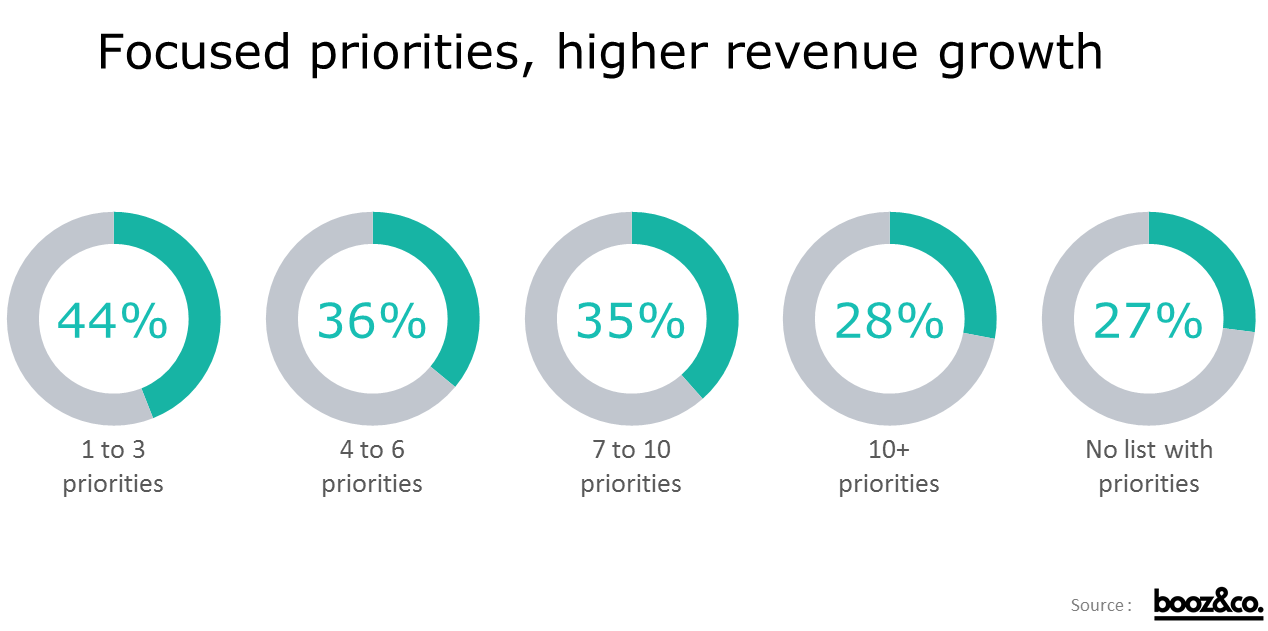Just Say No: How to Focus Your Strategic Priorities

Everyone knows that the heart of strategic planning is deciding the best strategies to invest in. However, to truly focus your strategic priorities, you'll need to decide what not to fund. That task is just as important … and substantially harder to do.
Why is it so hard to say “no”?
There are 3 reasons saying “no” is difficult.
- It’s hard to take a good idea off the table. The goal of the strategic planning process is to identify and gain alignment around the most promising opportunities. If a strategy has merit, why shouldn’t you keep it on the list? Because too many good ideas have resource and focus trade-offs.
- It’s hard to recognize the limitations of your resources. Strategic priorities are only as good as the resources that support them. Do your best managers have the bandwidth they need to deliver on all of your strategies? Or will you need to get more resources or rely on less talented managers? At what point does that bring too much risk to your strategy deployment?
- You might miss the next big idea. It is much easier to say “yes” to more strategies than to make the tough and potentially wrong decision to say “no” to that next great idea. It is hard to say “no” because intuitively, for many people, having more growth priorities seems like something that should drive more growth.
However, here is the key—having more strategic priorities does NOT drive more growth. The truth, in fact, is the opposite. Having fewer strategic priorities drives greater business growth. There is a real cost to NOT saying “no.”
According to a study by Booz, having too many strategic priorities resulted in below-average revenue growth. By contrast, companies with just 1 – 3 strategic priorities were the most likely to say they’d achieved above-average revenue growth.

How to focus your strategic priorities
How can more great strategic ideas lead to fewer results? Saying “yes” is certainly easier to do during strategic planning, but it’s much harder to implement. Your plans will be pulled in too many different directions, and your resources will be spread too thin.
But isn’t it enough to say “yes” to a limited number of items?
No.
Why? Because if you don’t say “no,” you’ll lose clarity, and that will detract from your “yeses.” In other words, good ideas don’t go away on their own. Neither do past strategies that you wish to change or stop. Unless you say “no” to specific initiatives, your organization will continue to spend valuable time and money pursuing them.
It might be a strategy that was successful in the past. It will be hard for your team to stop doing it, even if it isn’t successful anymore. After all, in the absence of information to the contrary, people will continue doing whatever has worked for them in the past.
It might be that you’re having a hard time reaching a decision about one of your strategies, so you keep it on the list as a “maybe.” What happens next is usually that some parts of the organization who really like that strategy will continue to pursue it—often at the expense of your “yeses.”
So how do you say “No”? Here’s an action plan.
- Clearly decide and communicate both the new priorities and which priorities the organization said “no” to—including those from the past that need to stop.
- Deploy and redeploy your resources against your prioritization. Your goal is to create bandwidth in key organizational skill areas that will enable you to focus on—and win—your top priorities. Your people aren’t infinite resources. Figure out how to increase their bandwidth, however, and they’ll move mountains for you.
When do you say no to a good idea? When it delivers superior results.
Need a strategy expert? We can help!
GET THE SKILLS YOU NEED
Thousands of independent consultants, subject matter experts, project managers, and interim executives are ready to help address your biggest business opportunities.